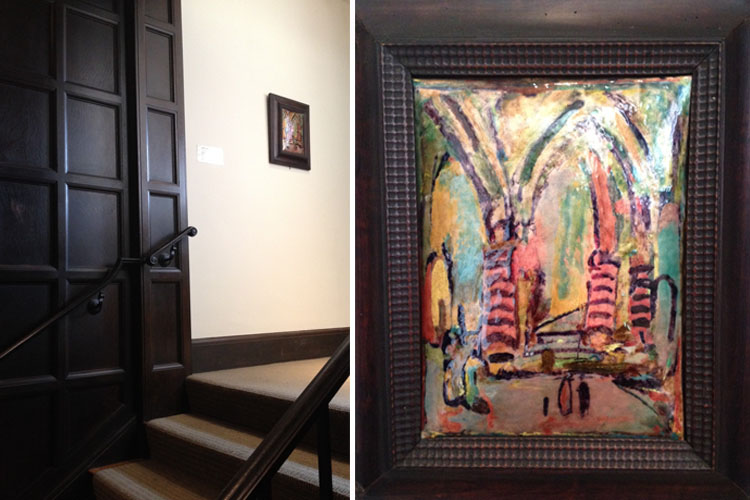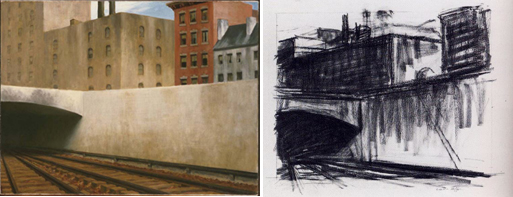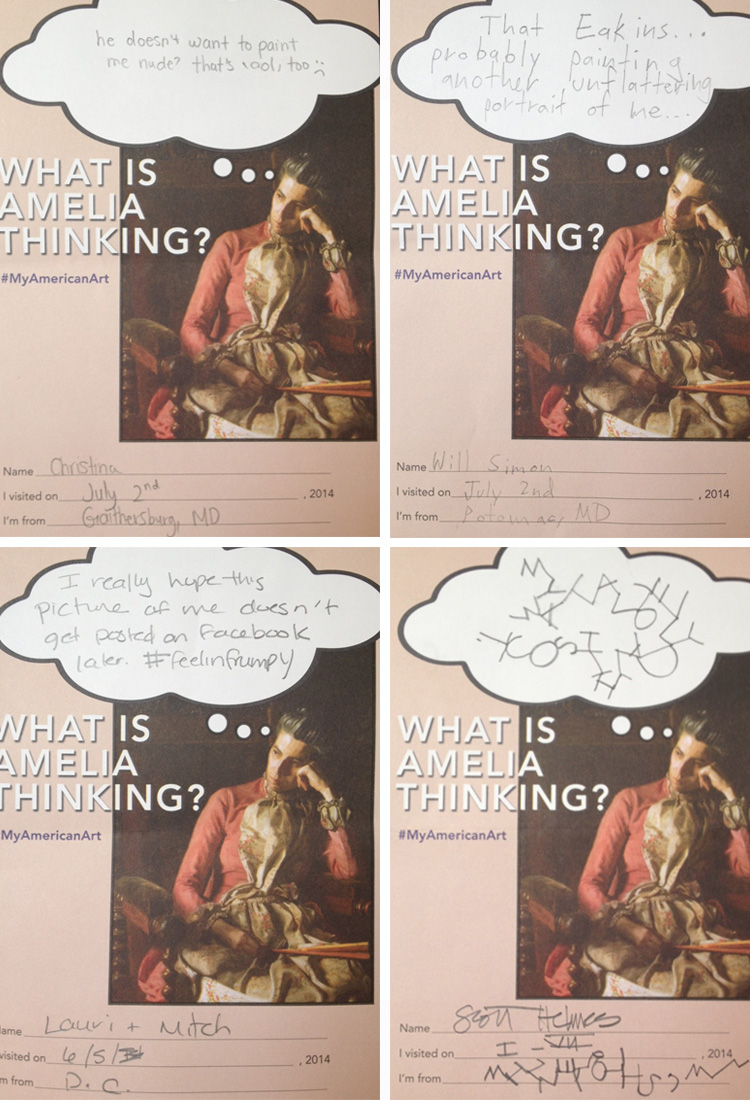In honor of American artist Thomas Eakins‘s birthday, here are some of our favorite recent submissions to the in-gallery comment station next to the artist’s Miss Amelia Van Buren, part of Made in the USA. We ask visitors to answer the question, “What is Amelia thinking?” and are receiving dozens of responses a week. Stop by the exhibition or tweet us your submission with #MyAmericanArt.
Author Archives: Experiment Station
Georges Rouault’s Unusual Materials

(Left) Georges Rouault’s painting Church Interior hangs unassumingly at the top of the stairs leading to the Music Room (Right) Georges Rouault, Church Interior, 1952, Enamel on copper, overall: 11 1/4 x 8 1/4 in. Bequest of Seymour and Janet Rubin, 2003
On my way through the galleries last week, I was stopped by a painting at the top of the stairs leading to the Music Room. There, hanging unassumingly on a wall all to itself, is George Rouault’s Church Interior. What caught me was the strange texture and shape of this otherwise fairly standard painting—the work seems to bubble out from its frame like an expanding balloon. Before looking at the label, I toyed with and quickly discarded a list of possible materials: Glass? No, too thick. Wood? Too smooth a curve. Plastic? Too undulating a surface.
Finishing my game, I gave in and looked to the placard for the answer: enamel on copper! I racked my brain for other examples of works on copper, but couldn’t come up with any. Naturally, my next step was a search of the Phillips’s collection for similar works and then, finding none, of the world at large. It turns out that copper had something of a heyday in the 16th and 17th centuries as an artistic canvas, of interest to El Greco, Rembrandt, and a slew of others.
Amy Wike, Marketing Manager
Hopper’s Birthday: Thoughts on Approaching a City

(Left) Edward Hopper, Sunday, 1926, Oil on canvas 29 x 34 in.; 73.66 x 86.36 cm. Acquired 1926. Paintings, 0925, American. The Phillips Collection, Washington DC. (Right) Edward Hopper, Approaching a City, 1946, conte on paper, 15 1/16 c 22 1/8 in., Collection of Whitney Museum of American Art, New York; Bequest of Josephene N. Hopper, 70.869.
To learn more about this painting on the anniversary of Edward Hopper’s birth, below is an oral history transcript from the Archives of American Art in which Hopper was asked about what gives this work its intense feeling. See the painting on view in the Made in the USA show through August 31.
JOHN MORSE: Mr. Hopper, I’d like to ask you about one particular picture that made a great impression on me when I first saw it at the Whitney exhibition, and still does, although now it’s in the Duncan Phillips Collection in Washington. That’s Approaching a City, and I’m quite sure, or how I could put it into words, the particular appeal of this picture—maybe it’s impossible—but I would like to hear what you have to say about it.
EDWARD HOPPER: Well, I’ve always been interested in approaching a big city in a train, and I can’t exactly describe the sensations, but they’re entirely human and perhaps have nothing to do with aesthetics. There is a certain fear and anxiety and a great visual interest in the things that one sees coming into a great city. I think that’s about all I can say about it.
JOHN MORSE: Well, in painting this picture were you aware of these wonderful solid geometric forms that took my eye at once?
EDWARD HOPPER: Well, I suppose I was. I tried for those things more or less unintentionally.
JOHN MORSE: Would you go so far as to say it’s almost a subconscious result, effect?
EDWARD HOPPER: Yes, I think so.
JOHN MORSE: But what was in your mind when you were painting it, I gather then, was this feeling of approaching a city?
EDWARD HOPPER: Yes.
JOHN MORSE: Thank you.
From: Oral history interview with Edward Hopper, 1959 June 17, Archives of American Art, Smithsonian Institution. http://www.aaa.si.edu/collections/interviews/oral-history-interview-edward-hopper-11844

